#maps rambles
Explore tagged Tumblr posts
Text

I genuinely have a "hear me out" for Alex/Shane and have in fact told someone (who doesn't play SDV) and they said it was a pretty convincing argument so I think I'm onto something.
#stardew valley#sdv alex#sdv shane#sdv haley#i have ALSO told someones plural who do play sdv but the fact i can somehow put pieces of string on the pelican town map#and be like ok listen this is basic info and -#and ramble for two paragraphs and get told they believe me was like im winning
4K notes
·
View notes
Text

I feel that one of the most overlooked aspects of studying the French Revolution is that, in 18th-century France, most people did not speak French. Yes, you read that correctly.
On 26 Prairial, Year II (14 June 1794), Abbé Henri Grégoire (1) stood before the Convention and delivered a report called The Report on the Necessity and Means of Annihilating Dialects and Universalising the Use of the French Language(2). This report, the culmination of a survey initiated four years earlier, sought to assess the state of languages in France. In 1790, Grégoire sent a 43-question survey to 49 informants across the departments, asking questions like: "Is the use of the French language universal in your area?" "Are one or more dialects spoken here?" and "What would be the religious and political impact of completely eradicating this dialect?"
The results were staggering. According to Grégoire's report:
“One can state without exaggeration that at least six million French people, especially in rural areas, do not know the national language; an equal number are more or less incapable of holding a sustained conversation; and, in the final analysis, those who speak it purely do not exceed three million; likely, even fewer write it correctly.” (3)
Considering that France’s population at the time was around 27 million, Grégoire’s assertion that 12 million people could barely hold a conversation in French is astonishing. This effectively meant that about 40% of the population couldn't communicate with the remaining 60%.
Now, it’s worth noting that Grégoire’s survey was heavily biased. His 49 informants (4) were educated men—clergy, lawyers, and doctors—likely sympathetic to his political views. Plus, the survey barely covered regions where dialects were close to standard French (the langue d’oïl areas) and focused heavily on the south and peripheral areas like Brittany, Flanders, and Alsace, where linguistic diversity was high.
Still, even if the numbers were inflated, the takeaway stands: a massive portion of France did not speak Standard French. “But surely,” you might ask, “they could understand each other somewhat, right? How different could those dialects really be?” Well, let’s put it this way: if Barère and Robespierre went to lunch and spoke in their regional dialects—Gascon and Picard, respectively—it wouldn’t be much of a conversation.
The linguistic make-up of France in 1790
The notion that barely anyone spoke French wasn’t new in the 1790s. The Ancien Régime had wrestled with it for centuries. The Ordinance of Villers-Cotterêts, issued in 1539, mandated the use of French in legal proceedings, banning Latin and various dialects. In the 17th and 18th centuries, numerous royal edicts enforced French in newly conquered provinces. The founding of the Académie Française in 1634 furthered this control, as the Académie aimed to standardise French, cementing its status as the kingdom's official language.
Despite these efforts, Grégoire tells us that 40% of the population could barely speak a word of French. So, if they didn’t speak French, what did they speak? Let’s take a look.
In 1790, the old provinces of the Ancien Régime were disbanded, and 83 departments named after mountains and rivers took their place. These 83 departments provide a good illustration of the incredibly diverse linguistic make-up of France.


Langue d’oïl dialects dominated the north and centre, spoken in 44 out of the 83 departments (53%). These included Picard, Norman, Champenois, Burgundian, and others—dialects sharing roots in Old French. In the south, however, the Occitan language group took over, with dialects like Languedocien, Provençal, Gascon, Limousin, and Auvergnat, making up 28 departments (34%).
Beyond these main groups, three departments in Brittany spoke Breton, a Celtic language (4%), while Alsatian and German dialects were prevalent along the eastern border (another 4%). Basque was spoken in Basses-Pyrénées, Catalan in Pyrénées-Orientales, and Corsican in the Corse department.
From a government’s perspective, this was a bit of a nightmare.
Why is linguistic diversity a governmental nightmare?
In one word: communication—or the lack of it. Try running a country when half of it doesn’t know what you’re saying.
Now, in more academic terms...
Standardising a language usually serves two main purposes: functional efficiency and national identity. Functional efficiency is self-evident. Just as with the adoption of the metric system, suppressing linguistic variation was supposed to make communication easier, reducing costly misunderstandings.
That being said, the Revolution, at first, tried to embrace linguistic diversity. After all, Standard French was, frankly, “the King’s French” and thus intrinsically elitist—available only to those who had the money to learn it. In January 1790, the deputy François-Joseph Bouchette proposed that the National Assembly publish decrees in every language spoken across France. His reasoning? “Thus, everyone will be free to read and write in the language they prefer.”
A lovely idea, but it didn’t last long. While they made some headway in translating important decrees, they soon realised that translating everything into every dialect was expensive. On top of that, finding translators for obscure dialects was its own nightmare. And so, the Republic’s brief flirtation with multilingualism was shut down rather unceremoniously.
Now, on to the more fascinating reason for linguistic standardisation: national identity.
Language and Nation
One of the major shifts during the French Revolution was in the concept of nationhood. Today, there are many ideas about what a nation is (personally, I lean towards Benedict Anderson’s definition of a nation as an “imagined community”), but definitions aside, what’s clear is that the Revolution brought a seismic change in the notion of French identity. Under the Ancien Régime, the French nation was defined as a collective that owed allegiance to the king: “One faith, one law, one king.” But after 1789, a nation became something you were meant to want to belong to. That was problematic.
Now, imagine being a peasant in the newly-created department of Vendée. (Hello, Jacques!) Between tending crops and trying to avoid trouble, Jacques hasn’t spent much time pondering his national identity. Vendéen? Well, that’s just a random name some guy in Paris gave his region. French? Unlikely—he has as much in common with Gascons as he does with the English. A subject of the King? He probably couldn’t name which king.
So, what’s left? Jacques is probably thinking about what is around him: family ties and language. It's no coincidence that the ‘brigands’ in the Vendée organised around their parishes— that’s where their identity lay.
The Revolutionary Government knew this. The monarchy had understood it too and managed to use Catholicism to legitimise their rule. The Republic didn't have such a luxury. As such, the revolutionary government found itself with the impossible task of convincing Jacques he was, in fact, French.
How to do that? Step one: ensure Jacques can actually understand them. How to accomplish that? Naturally, by teaching him.
Language Education during the Revolution
Under the Ancien Régime, education varied wildly by class, and literacy rates were abysmal. Most commoners received basic literacy from parish and Jesuit schools, while the wealthy enjoyed private tutors. In 1791, Charles-Maurice de Talleyrand (5) presented a report on education to the Constituent Assembly (6), remarking:
“A striking peculiarity of the state from which we have freed ourselves is undoubtedly that the national language, which daily extends its conquests beyond France’s borders, remains inaccessible to so many of its inhabitants." (7)
He then proposed a solution:
“Primary schools will end this inequality: the language of the Constitution and laws will be taught to all; this multitude of corrupt dialects, the last vestige of feudalism, will be compelled to disappear: circumstances demand it." (8)
A sensible plan in theory, and it garnered support from various Assembly members, Condorcet chief among them (which is always a good sign).
But, France went to war with most of Europe in 1792, making linguistic diversity both inconvenient and dangerous. Paranoia grew daily, and ensuring the government’s communications were understood by every citizen became essential. The reverse, ensuring they could understand every citizen, was equally pressing. Since education required time and money—two things the First Republic didn’t have—repression quickly became Plan B.
The War on Patois
This repression of regional languages was driven by more than abstract notions of nation-building; it was a matter of survival. After all, if Jacques the peasant didn’t see himself as French and wasn’t loyal to those shadowy figures in Paris, who would he turn to? The local lord, who spoke his dialect and whose land his family had worked for generations.
Faced with internal and external threats, the revolutionary government viewed linguistic unity as essential to the Republic’s survival. From 1793 onwards, language policy became increasingly repressive, targeting regional dialects as symbols of counter-revolution and federalist resistance. Bertrand Barère spearheaded this campaign, famously saying:
“Federalism and superstition speak Breton; emigration and hatred of the Republic speak German; counter-revolution speaks Italian, and fanaticism speaks Basque. Let us break these instruments of harm and error... Among a free people, the language must be one and the same for all.”
This, combined with Grégoire’s report, led to the Décret du 8 Pluviôse 1794, which mandated French-speaking teachers in every rural commune of departments where Breton, Italian, Basque, and German were the main languages.
Did it work? Hardly. The idea of linguistic standardisation through education was sound in principle, but France was broke, and schools cost money. Spoiler alert: France wouldn’t have a free, secular, and compulsory education system until the 1880s.
What it did accomplish, however, was two centuries of stigmatising patois and their speakers...
Notes
(1) Abbe Henri Grégoire was a French Catholic priest, revolutionary, and politician who championed linguistic and social reforms, notably advocating for the eradication of regional dialects to establish French as the national language during the French Revolution.
(2) "Sur la nécessité et les moyens d’anéantir les patois et d’universaliser l’usage de la langue francaise”
(3)On peut assurer sans exagération qu’au moins six millions de Français, sur-tout dans les campagnes, ignorent la langue nationale ; qu’un nombre égal est à-peu-près incapable de soutenir une conversation suivie ; qu’en dernier résultat, le nombre de ceux qui la parlent purement n’excède pas trois millions ; & probablement le nombre de ceux qui l’écrivent correctement est encore moindre.
(4) And, as someone who has done A LOT of statistics in my lifetime, 49 is not an appropriate sample size for a population of 27 million. At a confidence level of 95% and with a margin of error of 5%, he would need a sample size of 384 people. If he wanted to lower the margin of error at 3%, he would need 1,067. In this case, his margin of error is 14%.
That being said, this is a moot point anyway because the sampled population was not reflective of France, so the confidence level of the sample is much lower than 95%, which means the margin of error is much lower because we implicitly accept that his sample does not reflect the actual population.
(5) Yes. That Charles-Maurice de Talleyrand. It’s always him. He’s everywhere. If he hadn’t died in 1838, he’d probably still be part of Macron’s cabinet. Honestly, he’s probably haunting the Élysée as we speak — clearly the man cannot stay away from politics.
(6) For those new to the French Revolution and the First Republic, we usually refer to two legislative bodies, each with unique roles. The National Assembly (1789): formed by the Third Estate to tackle immediate social and economic issues. It later became the Constituent Assembly, drafting the 1791 Constitution and establishing a constitutional monarchy.
(7) Une singularité frappante de l'état dont nous sommes affranchis est sans doute que la langue nationale, qui chaque jour étendait ses conquêtes au-delà des limites de la France, soit restée au milieu de nous inaccessible à un si grand nombre de ses habitants.
(8) Les écoles primaires mettront fin à cette étrange inégalité : la langue de la Constitution et des lois y sera enseignée à tous ; et cette foule de dialectes corrompus, dernier reste de la féodalité, sera contraint de disparaître : la force des choses le commande
(9) Le fédéralisme et la superstition parlent bas-breton; l’émigration et la haine de la République parlent allemand; la contre révolution parle italien et le fanatisme parle basque. Brisons ces instruments de dommage et d’erreur. .. . La monarchie avait des raisons de ressembler a la tour de Babel; dans la démocratie, laisser les citoyens ignorants de la langue nationale, incapables de contréler le pouvoir, cest trahir la patrie, c'est méconnaitre les bienfaits de l'imprimerie, chaque imprimeur étant un instituteur de langue et de législation. . . . Chez un peuple libre la langue doit étre une et la méme pour tous.
(10) Patois means regional dialect in French.
#frev#french revolution#cps#mapping the cps#robespierre#bertrand barere#language diversity#amateurvoltaire's essay ramblings
674 notes
·
View notes
Text
if you ever find yourself wondering why cc has blurry textures or why it overlaps with accessories and other things, this is why
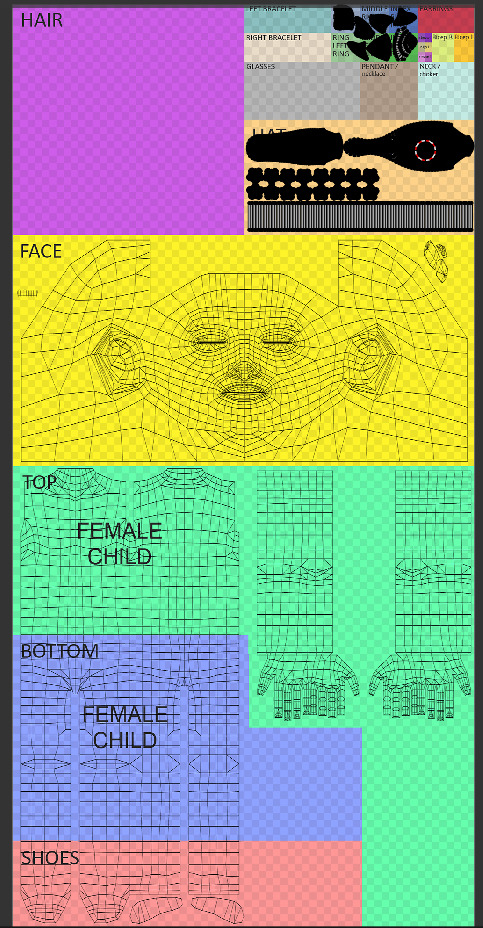
one texture map for EVERYTHING your sim wears :)
#rambling#im honestly so pissed off with this thing#a single texture map to rule them all#it makes me want to rip the game open and tear out bit by bit the coding that restricts everything to a single fucking texture map#this is why things are blurry#don't look good#i can barely do drawn on stitching on my cc because of this#small details turn to a blurry mess#and the crazy thing about it is that ts4 is the ONLY game in the main series that does this stupid shit#ts3 has separate texture maps for each item#EVEN TS2!!!!#But the sims 4 is not like other grills#one to rule them all#delete later
377 notes
·
View notes
Text
More Jason and Cass thoughts (sorry but also not sorry) but if I was magically given full control over DC and could write what I'd want obviously I'd make Cass Batman but I've been thinking of what sort of reaction and role Jason would have in response. I think I'd write his version of "Congrats on the new job!" as a test, involving the Joker and civilians and gangs and Red Hood and a ton of explosives. Bruce failed me, and now he's given up. You're his successor, let's see how you handle this dilemma that freaked him out so badly he threw a batarang into my throat rather than let me avenge my own death in front of him.
So obviously Cass will overcome the traps and the puzzles. That's the fun part to show how competent both of them are and sprinkle in little character moments as we go. But then we reach the emotional crux of the matter, probably laid out as some sort of saw trap because it's Jason. Here I am, a victim of murder. You say nobody dies tonight but I did, and I want the man who did it dead. Not only did Batman fail to avenge me but he failed to stop the Joker from going on to create even more victims. What right do you have to stop me from getting justice for myself? What right does this man have to life after what he's taken from me and from countless others? I'm not trying to kill a random stranger, I'm specifically demanding justice for my own death that I never got while I was gone.
There are two ways this could go. The straightforward route if I knew my time on this run was limited would probably be a pyrrhic victory like the ones Cass's og series was so fond of. Just like Bruce in utrh, she acts on instinct and saves the Joker (and Jason this time) . A win technically, but she fails the test. Jason is once again vindicated but with nothing to show for it. The story ends with Cass sending the Joker back to jail and going back to the batcave, where the old Robin costume looms judgementally, highlighting her failure. It would be the most fitting end given their character molds, all tragedy and conviction and unstoppable force meets immovable object etc.
However... I think the option I prefer would be a little different. Cass levelling with Jason, a killer talking to a murder victim. She has no right to stop Jason from getting justice, she has no love for the Joker but she knows any death she allows to happen like this would devastate her, just like that death row inmate long ago she tried to break out but ended up letting go once the family of the victim talked to her and demanded justice. I think... In this specific situation, she'd just be honest. Morally she has no right sure. Personally she just really really doesn't want anyone to die. Give her one chance, please. Let her try it her way. Not demanding, not lecturing or insisting, just... Please. Don't do this. Let me try another way.
And then what? Jason asks.
In the end a deal is struck. Cass will take the Joker and lock him up, ensuring he never harms anyone again while also trying to rehabilitate him. But the second she fails and he gets free, Jason kills him and she won't stand in his way. It's the kind of deal that leaves both of them mildly disgusted and dissatisfied with themselves, neither of them naturally creatures of compromise when it comes to this specific topic. But Cass is willing to do anything to avoid death and Jason did not expect the new Bat to be so... Flexible? Kind of? Of course maybe she won't actually hold up her end of the deal and when the Joker gets loose she'll try and stop Jason from killing him and he'll get his miserable vindication, but right now this is something strange and new and he's mildly confused and curious about where it will go. He doesn't believe in her ability to contain the Joker forever but he's willing to let her try because her reaction to that future failure interests him. She's given him a sword of damocles to hang above her head and he didn't ask for it or expect it. It's the type of power he never thought the Bat would just... Hand to him.
The conflict ends with neither of them fully winning or losing. They both don't really know what to feel about this.
The thing is, the second Cass let's Jason kill the Joker she's hanging up the mantle. She's staking the Bat on this, because it's always go big or go home with her when it comes to saving others, even someone like the Joker. In this magical universe where I have unlimited power, Cass would lock the Joker in a secret bunker and have Leslie Thompkins talk to him daily, mostly because I think her pacifism speeches and debates in the comics would make a fun contrast to the Joker's evil sadism. (But what about his rights? Doesn't he deserve a trial and to be held in a regular prison? I'm going to be honest I think Cass would be very comfortable bending the rules on this specific situation. Morally questionable but I'd have fun with it. She's going to let Leslie treat Joker like her personal pet project to save his soul because yes she wants him to change but also she's got a city to save every night so go crazy Leslie, have fun.)
And the Batman series would continue with Cass as the lead, new challenges and new antagonists and every twenty issues or so for the first hundred we'll cut back to the Joker briefly if his chats with Leslie can help highlight some thematic element of the current arc. But bit by bit he'd slowly fade away onto oblivion, maybe getting referenced every hundred issues or so until eventually no one remembers or cares about him because there's so much else going on. Meanwhile Jason's got a good thing going as Red Hood, primarily based in Park Row and a tentative ally on the occasion when their vigilante work aligns. Unlike Joker he's a much more frequent character in the comics, and after say 10 years (this is my magical fantasy universe Cass's batman run is going to last for a very long time alright) when people think of DC characters they think of Red Hood long before they think of the Joker.
Is any of this realistic? Right now of course not. It's why I'd go with the pyrrhic victory if I actually got the chance, because it would be the best way to tell the story in the larger context of the Bat narrative. But it's my fantasy DC editor and writer daydream and I'm going to dream big. They're never going to be normal happy siblings, their personal demons will never fully let them be free and the looming possibility of losing everything they currently have narrative wise if Bruce comes back as Batman will always be there. But it's maybe the closest to peace they'll ever get. Unsatisfying and tame compromise that probably violates several laws and ethical codes but whatever. Cass has never read the Geneva convention and Jason's not going to shed tears over the Joker. Let him die relevancy wise if not physically.
#dc#cassandra cain#batfam#dc rambles#Jason Todd#In terms of the larger meta narrative ultimately whether the Joker dies or gets locked up is irrelevant#But Cass will never be willing to just let someone die without trying to the very end to make her case for their life#And I think it's entirely possible Jason would reject her proposal and we're back to square one#But I think the two main reasons to me that he'd accept is one. Cass betting her career on this. She doesn't need to do that.#She could save the Joker and fail Jason's personal test and that would be that. Her actually reaching out#Being willing to risk something precious just to try and compromise with Jason. It would be more than he expected#From a family that he understandably believes he does not matter enough to#And secondly is the long term consequence of the Joker fading into irrelevancy while Jason maintains his prominence as a character#A reverse of his death where he was turned into nothing but a footnote and a memorial for Batman angst#While the Joker went on to gain even more narrative power as Batman's Greatest Enemy#Now he is nothing. And Jason is alive and a solid part of the mythos#It would take time obviously but ultimately from a Doylist sense to me it's the most satisfying resolution#Maybe after like 10 years Cass can die again briefly the Joker gets out and Jason gets to kill him to give Maps some fun Robin angst#But ultimately it's very important to me that if Cass becomes batman the Joker must become irrelevant#He's just not useful enough thematically to be worth his current narrative weight when she's running the show
327 notes
·
View notes
Text

hi i'm unw el l
#ramble#he is truly the guy of all time#i can't wait to find out if his eyes are purple for a Reason or if he's just a special boy#the dichotomy of 'what could happen there's 37 more books'#and 'oh god there's 37 more books worth of stuff'#disclaimer i didn't know a LOT about canon forgotten realms but 3 pages in i was like#ah. that's why minthara is Like That#there's an essay in my head somewhere about how i'm never judging a drow character again because it's LITERAL CULT MENTALITY#tl;dr i love it. it's bonkers 90s fantasy and i am Here#imagine the ascension i felt when i opened the book and there was a MAP#thank god for the death of cringe bc i'm so much happier embracing that i'm a big fuckin nerd and not too cool for dnd novels#every time i start reading again after not having time i remember why if fuuucking LOVE BOOKS
429 notes
·
View notes
Text

star sailor 🎇
this was drawn a little over 2 weeks ago as i was in the middle of act 2! it's kind of funny in retrospect hahaha i put the star shaped light on sif as a nod to my vague theory that sif had a star for a heart/soul but lost it. Well it wasn't quite right but there was one line of dialogue going towards that direction? a win is a win
#the story with the boat <3333#even after the whole game that kind of stuck w/ me#just a little guy out in the ocean :(#that and how sif just Knew how to fish#i love fishing. i think isat should update with a fishing mechanic.#one of the things i did Every Loop#this was just a quick scribble but#definitely want to do more star map aesthetic stuff w/ sif#abusing the same color palette?#not me... no way... /s#enough tags rambling haha#in stars and time fanart#in stars and time#isat#isat siffrin#vague spoilers#isat spoilers#just to be safe#isat act 2 spoilers#siffrin fanart#in stars and time siffrin#artilite#artilite art
933 notes
·
View notes
Text


phoenix wright drawn with totk’s hero’s path !!!!
some zoom outs


i’ve had this dream of drawing something with the hero’s path ever since it released in botw,,, and now i’ve done it‼️‼️‼️🗣️🗣️🙌🙌 letsss gggooooo
there’s also a shrine that i somehow missed ( here in red),, i decided im gonna save it to be my last shrine now lol

#ace attorney#tears of the kingdom#totk#zelda#loz#loz totk#legend of zelda#phoenix wright#okart#yeah i’m giving this the art tag#heheheh >:33333#now i ramble forever in the tags#took 6 hours!!#i was worried it would turn out really bad and i’d be upset i couldn’t ever get rid of it (this is on my main save file)#but i’m pleasantly surprised with how it turned out :DD#maybe one of these days i’ll start a new file and draw something before ive already ran all over the map#x333 we’ll see#i think he looks really cool on the middle zoom hahah!!#raaahhh!!! :DDD
196 notes
·
View notes
Text

Oh, help me God, this hellboy got me coming back for more
reblogs super appreciated !!! close-ups under the cut !


#south park#south park fanart#stan marsh#shroomer's art !#shroomer's archives: south park#artists on tumblr#my ramblings + thought process starts here (warning. its a lot) vvvvvvvvvvvvvv#"heyyyyy shadowww. its mee. da devil.#the amount of eyestrain i went through while rendering this#gradient maps!!! are so fun!!! (they are not i hate them so much)#lots to improve on still. but that's for next time!#the process of making this was so arduous.... but i learned a lot i feel#(and also if i had spent any more time working on this i would have actually lost it)#BUT YIPPEEEEE HAPPY BIRTHDAY STAN MARSH THE LOSER BOY I CANT BELIEVE I FINISHED THIS ON TIME#2 days in advance too by the time the queue uploads it#anyways.... stupid loser boy stan marsh..... i found out his birthday was coming up soon#and i had this idea sitting in my head for like.... 2 weeks i think#popped up when i was listening to lexie liu's album the happy star and the song diablo came up#and i thought wait.... doesnt stan get possessed by satan at some point#and so here we are!!#I ACTUALLY RECENTLY WATCHED THE EPISODE TOO AND THE THEME OF THE SONG FIT THE THEME OF THE EPISODE CRAZY WELL AS WELL#sometimes my genius is almost frightening#anyways this emotionally sensitive animal lover boy has really grown on me over the course of the series <3#i still havent.... finished cartman's sheet.....#the self designated deadline i gave myself of 2 weeks is coming up soon and erm. guh.#dies#this took so much effort and brainpower that needed to be allocated to my assignments.......#but its ok!!! im gonna sell this as a print!!! so its kind of!! productive!!#guh i hope this one performs well sob theres this nagging feeling i have that its not gonna do well at all#try painting some funky lighting + greyscale painting she said. it'll be fun she said.
218 notes
·
View notes
Text
My doctor works at a clinic with several other medical providers. My wife and I adore her. Not only did she catch my thyroid fuckery when it was reading in normal ranges but she’s also a friend. She’s been to our home a few times with her very precocious daughter.
To help handle clinic load they recently brought on a nurse practitioner. They’re loading her up with overflow patients that need simple things. Like for instance, my wife who just needs an allergy shot weekly.
The clinic asked my doctor, “Hey, which Tuesday patients do you want to keep for yourself?”
Her immediate response was, “Well I’m obviously keeping [FFS] and [wife]!”
#ramblies#it was so cute#this week she set my mind at ease by mapping all 40 moles on my body to be monitored for skin cancer
226 notes
·
View notes
Text
i don't like criticizing animations or fan projects (barring obvious issues of course) because they're almost always done for free and for fun, but sometimes i do see a premise, song choice, and character choice where it could've easily focused on a much less popular character or story and instead chooses the most popular characters available and just uh. crams them in to fit the song.
#deer rambles#me seeing a hotel california map and going oh cool this would be the perfect song for a dark forest animation#and then it's not </3
470 notes
·
View notes
Text
My biggest problem with Hitman content on YouTube is that everyone always skips over caring about the story, meaning I bought the game expecting to only care about the gameplay.
And then it hit me with a story about self-identity and purpose which resonated so much that I can't stop thinking about it. Everything about 47 and Diana's journey is a brilliant escalation, one about the realization that even though Diana is slowly bringing out 47's ability to feel again, she's still continuing the cycle of him being used and controlled. It hit me right in the chest when 47 is doing his second mission without Diana, and repeats her line "I'll leave you to prepare" to Olivia. To see a cold-blooded assassin miss his one friend in the world, to see how worried he becomes when she's present for his next mission.
And damn, the way scene where they dance together was perfect, because you can just tell that the betrayal is coming. It almost feels like a premature goodbye. Diana cares deeply for 47 after all this time, and that's why she knows she has to let him go. It's not truly a betrayal - it's mercy.
When he takes out The Constant and goes off his own, they leave things a bit vague, but I love it. It doesn't matter who Diana is now, because her and 47 aren't together anymore. He's on his own, and while he's continuing the path The Constant taunted him for being stuck in, it's different. He makes the choices now. He works for himself.
I teared up watching him smile while talking to Diana. Agent 47, the cold blooded killer, is finally allowed to feel, to grow as a person, because he's free. It's the best conclusion I could've asked for.
The gameplay is amazing, obviously, but I wish less people ignored the story behind it all. I haven't even touched on Providence or Lucas Grey, which are both excellent in their own rights.
Maybe I'll touch more on those another time. I'm tired lol
#ramble#hitman#hitman 2#hitman 3#agent 47#diana burnwood#i probably do need a break from hitman though#I haven't seriously worked on writing in a bit#because I keep going for#silent assassin/suit only#on a bunch of maps#while saying each one will be my last for now#it never is#lol
227 notes
·
View notes
Text
ga-ming/gaming/嘉明:
mr. tea drinker. escorts cargo from yilong wharf (somewhere in chenyu vale) to liyue harbor. chenyu vale is known for tea leaf growing. where are tea leaves grown irl????? see below

SOUTHERNER??? southerner confirmed????
tea drinker and dim sum enjoyer.........
wushou -> 舞兽 -> literally translated as "beast dancing" -> it's just lion dance but with a knockoff lion ig
TIL! seems that he's based off the red/black lion known as guan gong / kwan kung / 关公!
irl, they look like this (which also explains where his black/red color scheme comes from)
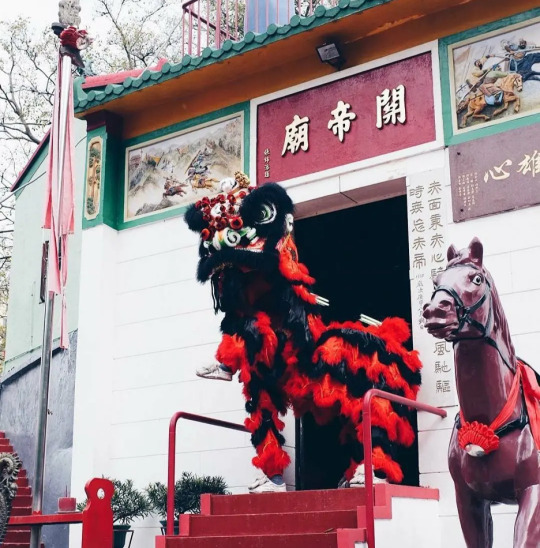

this specific lion is one of 3, the other two are 2 other historical figures from romance of the 3 kingdoms (liu bei and zhang fei. this one comes from guan yu)
his constellation name is Leo Expergiscens which means awakening lion. it's 醒狮 in chinese, which is another name for lion dance used in canton/guangdong !!!
NO INCOME FROM LION DANCING T_T it's his side hustle.....
your honor he's perfect please release him alr
#these are all ramblings!!! made for fun etc etc also first map is obv half a meme so pls dont take too seriously#i do think it's funny that he's even more blatantly canto than the way that yun.jin is beijinger.#gaming genshin#ga-ming#嘉明#ga ming#gaming genshin impact#ga'ming#????????????? fandom should decide on a tag......soon pls#genshin impact#ramblings!#teyvat thoughts#CAN YOU TELL IM NOT NORMAL ABOUT HIM WHEKJGHIWUEIJFK chewing him like a piece of gum
680 notes
·
View notes
Text
lethal company idea: like 3-5 of these things (talking pipes i think?) randomly generate within the interior and you can talk to people through them. one by main entrance and the other two wherever the fuck out. you can hear enemies through them too i think

#rambling#lethal company#poor man's walkie talkie but itd be silly goofy#maybe it could be exclusive to a new interior map
433 notes
·
View notes
Text


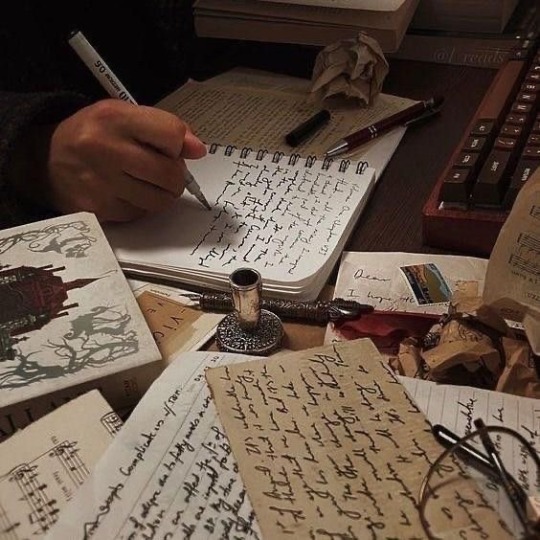
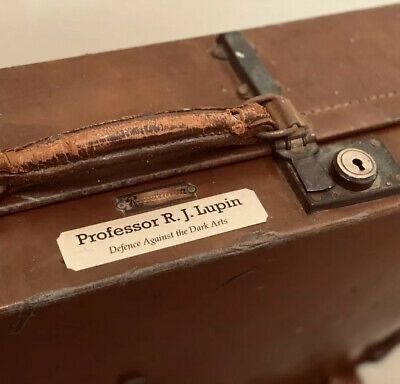
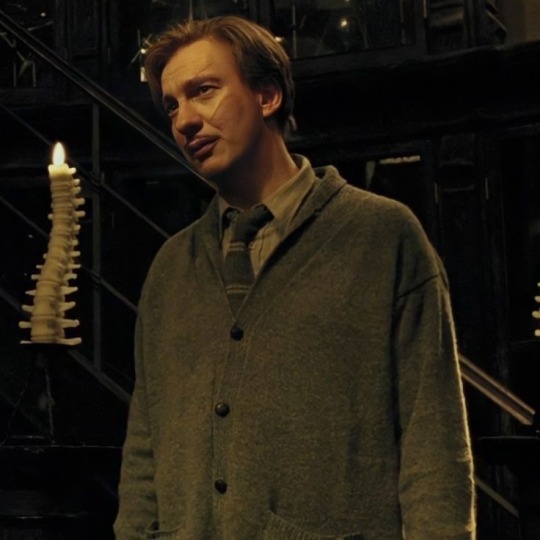
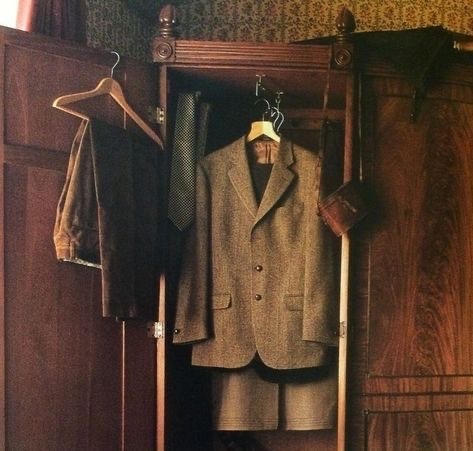



forever a Remus Lupin girl
#all photos from Pinterest#remus lupin#david thewlis#wolfstar#autumn#dark academia#harry potter#sirius black#sirius being sirius#sirius orion black#remus x sirius#moony#anything for our moony#moony rambles#moony x padfoot#moony wormtail padfoot and prongs#james & peter & remus & sirius#remus loves sirius#fall aesthetic#prisoner of azkaban#the maraunders map#marauders era#the marauders#marauders#ma
226 notes
·
View notes
Text


[Start ID. A redraw of the official icons of the ten named slugcats from Rain World, arranged in two rows: Survivor, Monk, Hunter, Nightcat, and Gourmand in the first, Artificer, Rivulet, Spearmaster, Saint and Enot/Inv in the second. Each is drawn in roughly the same pose as in the original art and fitted with speculative interpretations of their biology, and the second image is a “dead” version of this. For example, all ten have slug-like rhinophores in place of ears, cuttlefish-like colorful eyes with strangely-shaped pupils, cephalopod-like beak "teeth", expressive barbels or oral tentacles at the corners of mouths, spiny radulas, and the frilly mantle fringes of sea slugs, though otherwise their faces are squishy, simple and mammalian-shaped.
Cream-colored Survivor and yellow Monk both share triangular, bicolored spots matching their eyes (which are tan and brown, and two shades of blue, respectively), small, bumpy fringes, and relatively neutral looks on their faces. Defensive-looking Hunter is mostly a dull orange-pink, though their blobby fringe is a more violent red and their back is purple and marred with lumps. Nightcat is navy blue and flecked with dots of yellow and teal, their rolled rhinophores are a lighter blue, and their shading fractures into stars in some places. Gourmand is almost uniformly tan, their wide, very ruffly white mantle fringe bordered by a spray of white spots, and their beak sticks out from either corner of their smile. Primarily red Artificer, snarling, has yellow markings of multiple sorts, a prominent yellow dewlap and their characteristic dark scar taking out a chunk of its face. Rivulet is a darker blue than usual, with long barbels, red gills and rings, countershading, and a cheerful expression, sticking out their radula. Spearmaster is purple with orange accents, eyes and spots, a large fringe and spines down their back. Saint’s green caryophyllidia are marked by small, yellow diamonds, and their long, thin radula extends far below them. Enot is decorated with mottled red stripes, blue patches, yellow stars, and an uneven and almost cartoonish imitation of blush, though generally the same deep blue as Nightcat, a passive or almost slightly smug look on their face and their rolled rhinophores out to either side.
In the second image, nine of the slugcats’ eyes are crossed out, indicating that these are death icons. They look fairly the same, with mostly expression differences. Survivor is caught in the beginning of a threat display, a karma flower sprouts from Monk’s side, Hunter is burdened with overgrowing, purple and blue rot, Nightcat’s rhinophores are pinned back, and Gourmand looks mildly disheartened. For the final row, Artificer bites its radula between small plumes of smoke, Rivulet drops their expression, Spearmaster looks very startled, Saint looks almost entirely the same besides half-open eyes and their markings greater in number, and Enot grins confusedly. End ID]
If you'll excuse the unusually lengthy ID: the arena meme introduced by @pansear-doodles at long last after a nearly year-long wip status (or, rather, finished a month ago today to honor my own first time playing it!)
Design notes and shout-outs under cut! :]
The following people are some of those who’ve inspired my designs most since I started this eight months ago (or just inspired me to get a little weirder with slugcat biology), among many others for sure, and I thank them for it–but this is simply to bring attention to artists I find cool, and in no way an obligation to interact or anything :]
> @saturncoyote , @carpsoup , @charseraph , @gallusgalluss , @bitsbug , @dopscratch , and @0hmanit (and a special mention to dddeerbo and hunterlonglegs, who’ve since deactivated)!
Survivor: Surprisingly the hardest to pin down the colors for, since nothing with its sibling's palette seemed to match up right (I did have to add in a little blue somewhere for Monk, the beginning of making it clear how much I’m simply going based off of vibes for the colors of scug innards). I consider them, Monk and Gourmand to be part of the same gene pool of slugcats, and even possibly the same colony even if the latter isn't really related, so took a bit of Gourmand's coloring and fit them in with their inspiration: Goniobranchus verrieri. They serve as a bit of an introduction to my ideas of scug traits (i find it really fun how many people have thought to add so many silly sluglike fixtures of biology completely independent of me, buuut here I’m mostly talking about species variation), and like in-game they’re pretty average! They, Monk and Hunter have a couple scars sourced from a piece of Joar's concept art that I'm failing to find, those across the bridge of the nose, under the eyes, and across the rhinophores, respectively, and my Survivor interpretation features many on the back of the neck, as a result of survived lizard bites.
Monk: Their coloring is primarily based off the fact that I associate them with blue fruits, honestly, a bit because I was compelled to establish a familiarity with Rivulet, and lastly inspired by the spots of Goniobranchus kuniei (and geminus, less important to me as one of my characters is a kuniei instead, but more fitting). Between the yellow + blue and the circular marking in the center of their face, they’re meant to bear a little resemblance to an iterator that shares similarities with the characterization I’ve given them, and similar coding of her sibling can be seen on Survivor’s markings around the eyes. As both a “default” slugcat and one whose campaign I haven’t played, though, I can’t say I have much more to point out about em.
Hunter: The whole rot thing made for a really fun time drawing them, and while the color change on their back is a result of this, it’s also an excuse to relate them to Babakina festiva, arguably my favorite sea slug (mostly for sentimental purposes). And to Spearmaster, a fellow messenger slugcat, and it serves as a gradient between Hunter’s pink and the “traditional” color of Rot seen in the DLLs. Aside from their affliction, they’d actually be the plainest in terms of design, as they don’t have any patterns or quirks of body type, just the red + purple and strange lumps + possible malnutrition. I can’t remember if NSH had created them in particular or just...caught + released or something, but it probably wouldn’t be strange for a lab-grown slugcat to be simple like that.
Gourmand: Like the two above, they’re rather plain in terms of coloring and adaptation, and like the two above, I find that fun. I decided it would be nice to avert the “all slugcats being of the same body type, and Gourmand’s out of place as the exception” thing by just...adding more fat to all of them, really. I did want to emphasize their sheer bulk even so, both fat and muscular (not like I couldn’t have still gone further with it, of course, but slugcat anatomy can be a little obfuscating sometimes, and they were intended to look rather plush considering personal size headcanons and therefore the lack of proper gravity), and the thick and flounced mantle looked like a good addition, as per their sea slug Glossodoris hikuerensis. Unlike Survivor and Monk, I didn’t attempt to hold their resemblance to any particular other character (which means a little less to balance out the “default gene pool” thing), so those are all the design notes I have for em.
Artificer: The second slugcat I’ve ever played, or finished the campaign of, my favorite for at least a long time, and the first thing I did was give them yellow accents, the shape of which have troubled me slightly (not quite like the spots or stripes of the others). They’re both a little more appealing and more explosive-looking to me, and considering how early on I played Arti, actually present in some of my older art. It does give them a little resemblance to Saint (completely intentional, two slugcats with strange relations to karma), as well as the fact that its radula is green for familiarity with one of its children (at some point it was going to have all-green markings, even!). I’m generous with their scars, partly because it was fun to overemphasize the one on their face and partly because it does seem like a reckless slugcat, on top of the dangers of its explosive abilities–I’ll probably just keep adding more forever. Mostly-red sea slugs aren’t too common, but Hexabranchus sanguineus works for sure. The ridged, yellow dewlap can expand for combustion purposes, or something along those lines. Arti’s where I began experimenting with a lot of the mildly-offkilter features seen in my interpretation of slugcats, as they’ve once again been a favorite from the start.
Rivulet: I've obviously given other slugcats spots, deeply enjoy the bubbly-soda markings of other peoples' slugcats, and thought seal riv would be cute. Despite not too closely resembling it, they've been government-assigned Hypselodoris bennetti, for color reasons and for a couple sentimental ones. Originally, the colors of every scug were meant to match up with the custom colors I gave them at the beginning of their campaigns, (though Arti, Gourm and Spearmy are the only three who actually apply here, since I've only played through half the slugcats: I gave arti the yellow as mentioned above, gourm brown eyes and spearmy light pink spears, furthered by the outskirts pearl accompanying me and that palette all the way to moon. Tolerance training for eternity in hell cause I already knew about the maroon pearl quest). I initially gave them the colors of the bi flag for fun... but with the limited palette of this image, I was left without pink for a while and decided to see how they'd look in red. I then realized how they now wonderfully matched Moon, and besides, red's a sort of camouflage in deep water! As a side-note, the difference between their eyes and those of others always bothered me a little for anatomical purposes, and the cephalopod eyes were probably influenced by this!
Spearmaster: Inspired as much as possible by @notyourfunnyman ’s wonderful spearmy: designed in a way that helps it fit in with scavengers, at least between the long sensory tentacles, big ruff, back spines and slightly thin/distended anatomy, a form of defensive mimicry. I always had annulate rhinophores in mind, for a little diversity sure, but mostly because the shape reminds me of radio antennae and communication towers (seems fitting for the comms array and being a messenger slugcat)! I started searching for a real-life slug to give them just by looking up their rhinophore shape...and was met immediately and coincidentally with annulate-topped nudibranchs that fit them more perfectly than I could've imagined: Flabellina and surrounding clades, I think Paraflabellina ischitana works very nicely. The orange was completely unplanned, but there wasn’t a place for light pink among the other slugcats’ palettes, and importantly it likens them to both Hunter and Seven Red Suns a little more.
Saint: I am very much a non-furred slugcat enjoyer, with respect to those who aren’t, so figuring out the only visibly furred slugcat was an interesting challenge. I’ve decided that they likely have other, milder adaptations for help in the cold, mainly just more efficient fat storage, and what looks vaguely like fur is instead a bunch of tubercles (called caryophillia, for the second reminder out of three). Their inspiration doesn’t have these, however, Miamira sinuata’s numerous yellow and blue spots (not to mention...whatever’s going on with that shape) and general effect of being the only really green nudibranch I could find were probably perfect for a strange green echo. Not pictured, but their beak-teeth are tiny and flat to make a surface for grinding soft food against with the lack of a functioning radula, which is tipped with a specialized spiny “grapple-hook” for better traction/grip (not to mention the numerous little teeth running down the whole thing).
(Best part of hiding this under a readmore means edits will be seen by all reblogs, I'm mostly sure, because I completely forgot to mention! The spots on their forehead are simple eyes. Their camera eyes appear closed in-game, I like to believe their complex eyesight is rather poor anyways or otherwise reason that they aren't seeing out of those, and while this was far from her REASON for attunement with the world, it does help compensate for mainly viewing it through a canvas of simple light and dark. This, and the fact that their swapped-out "fur" is not only to commit to a lack of hairs but contributes to sensory input!)
Nightcat/Enot: I guess you could say I found the “these two are technically the same person” compelling. (E.g. similar colors, both very strange and enigmatic, and Enot/Inv/Sofanthiel’s remark during the dating sim about getting removed from Arena Mode.) I doubt they’re the only two slugcats in their body, considering humans with DID tend to have more than a few (and I find it very funny that a slugcat bearing resemblance to Nightcat appears in Gourmand’s ending. They’re allowed in the colony and Enot isn’t </3), and I have to credit @faelingdraws ’s art for being what convinced me on it! Their design inspirations come down to trying to balance a few different ideas: making the patterns and palettes of both look oddly similar (special mention to the stars, since those are fun to draw), basing them off of Felimare sechurana and juliae respectively, using blocks of color with the same placement as in Enot’s official art, and specifically making Enot look...biologically reasonable and imperfect, whilst also clearly trying to imitate human displays of emotion (what with...the eyes and blush on that one piece of official art).
Lastly, here’s just a lineup with notes on body shape and size. Most of the nicknames (existing to give a little more space, that’s all) are obvious, and while I can’t remember why I shortened Nightcat to Nox, it is in honor of my friend by the same nickname :]

#survivor rain world#monk rain world#hunter rain world#nightcat rain world#gourmand rain world#artificer rain world#rivulet rain world#spearmaster rain world#saint rain world#enot rain world#slugcat rain world#rain world#peridots-art#< feels like too long since that last tag's been used. i can say with certainty that the majority of the reason i haven't been just as#active here (not to mention not drawing as often since that's relevant) is just due to my life getting busier with a new school year but i#do miss putting my stuff here! and would like to reblog more on top of that.... so forgive not remembering exactly how to tag everything#(and how to write everything up there but to be fair it's not like long textposts were a staple of mine. i mostly just rambled and it was#fun hehehe.....some of those notes (parts of riv/spears mostly) were written around the beginning of the drawing itself)#OH i messed something up with the drafting and really did not mean to post it while tags were in progress! but regardless. i would've liked#to post it tomorrow to mirror how i was going to post it on JAN 29 a month ago......but it's not like i'm unhappy with this outcome :]#to sum it up really though it's been strange working on this for so long.....unfortunate to not get a chance to let it be seen and keep#experimenting with odd biology much earlier but i'm just glad it's out now cause i am proud of these!! it's been a lot of fun and slugcats#are still my go-to doodles :] if i had to end this off promptly though what's up with that secret pipeyard shelter as gourm that's not on#the maps. connected to vs_a04. doesn't appear on the miraheze or interactive maps for anyone strangely but i've only been there as gourmand#anyway! i'm sure there's a lot i could've said in the rush but goodbye dear reader anyway :]#i forgot spearmy initially. i'm so sorry#peridots-described#< NOOOO THAT DOESNT SHOW UP THERE'RE TOO MANY TAGSS.......
345 notes
·
View notes
Text

thoughts on bonerattle arena
#lore wise? ark polaris is great amazing 10/10#gameplay wise? ehhh not my favorite but it wasn't the worst with the right group of ppl in higher difficulties (600+)#bonerattle is essentially ruins 2.0 but the devs actually keeping in mind all the new bosses and stuff that they gave us in 3#that's why returning maps like grounds and bay are so jank now compared to 2#ark is like one of if not THE smallest of the sr maps in both 2 and 3#and I just can't imagine how chaotic it would get with sr's higher difficulty new bosses and especially the kings#w/o there being some reworks but bay and grounds didn't get reworks so same would be said for ark if it did ever come back#and sure we have stuff like egg throwing and squid surge to help but still lol#ok i've rambled enough so imma stop sdklfj#splatoon#splatoon 3#salmon run#ruins of ark polaris#bonerattle arena
232 notes
·
View notes